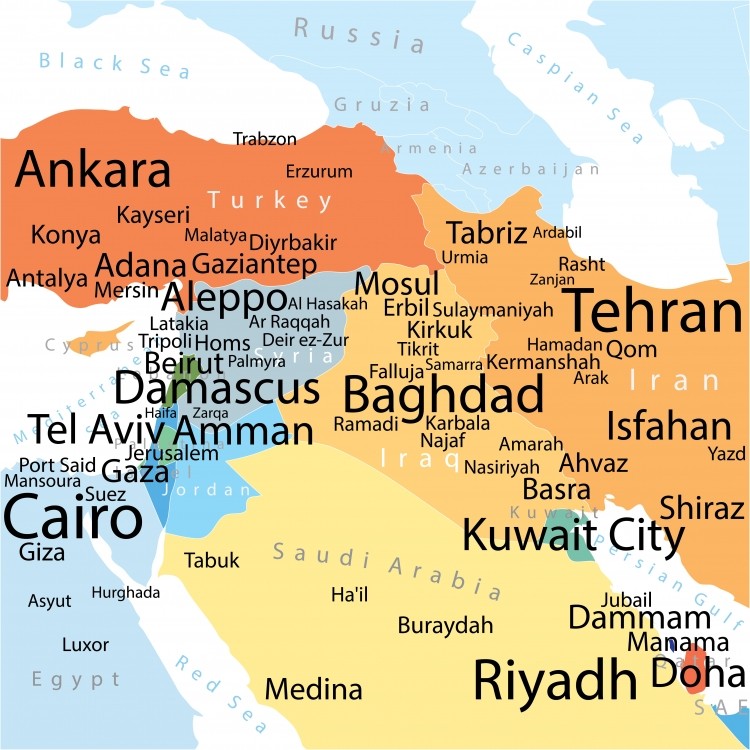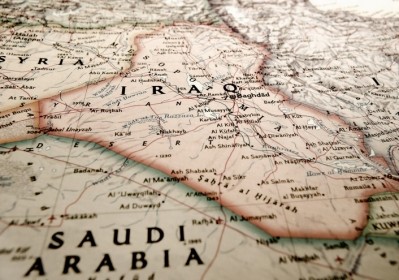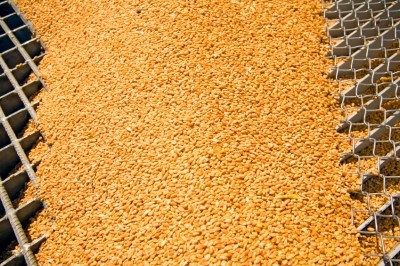USDA evaluates Iranian feed, grain market potential

The US Department of Agriculture’s (USDA) Economic Research Service (ERS) released a report on Friday examining the potential role the US feed grains could play for Iran looking forward.
The report examines the potential for the US to increase its presence in the feed market in Iran, said the USDA in the report.
The country has one of the largest economies in the Middle East, a growing population and improving incomes, the department said in the report. Its food demand accounts for much of its internal production capabilities, but interest in meat products also is increasing.
The expected rise in production from the livestock sector and increased feed requirements may offer the US an opportunity to be a supplier of feed grains, said Mesbah Motamed, agricultural economist with the ERS and report author. However, some barriers to trade remain.
“There are a handful of crops that we send to Iran,” he told FeedNavigator. “Someone is testing the water, but these are not volumes that would tip anyone’s radar, but people are trying – shipments are going into Iran from the US and there is some interest to engage there.”
Feed grain market potential
The end of economic sanctions against Iran through the Joint Comprehensive Plan of Action signed in 2015 ceased a US embargo on food imports from Iran and penalties on non-US people and entities trading with Iran bringing the country improved access to world markets, said the USDA.
Agricultural trade from the US was not prohibited with those sanctions, but licensing requirements along with banking and financing challenges tended to keep US sellers out of the Iranian market, the department said. The revised rules improve that process and could potentially increase market share.
The government in Iran has put more effort into supporting the production of grains more often used for food, said Motamed. One goal is to establish self-sufficiency in the country for some of that production.
As the livestock sector expands it is likely more feed will be needed, he said. “The growing livestock sector could see a growing need for imports – their poultry sector in particular is growing,” he added.
The poultry sector has seen significant growth in the past two decades, said the USDA in the report. And imports of barley, corn, wheat and soymeal have increased.
“The demand for feed will continue to grow,” said Motamed. However, it is unclear what role the US will be able to play in addressing the increasing need for feed and feed ingredients, he added.
The growth in demand for animal products tends to track growth income, he said. Income levels are predicted to increase by about 4 to 5% in coming years.
However, as the demand for animal proteins increased with population income growth, there is a potential that a portion of the historic market between the two countries could reemerge, he said. At this point there are some feed sales taking place.
From 2011 to 2015, the country imported about 71% of the feed corn used and 29% of its barley needs, the USDA reported. Imports of feed ingredients included about 7m metric tons of corn and about 2.1m tons of soymeal or protein meal.
Remaining barriers
However, there are still barriers to efforts to increase US producers’ market access to Iran, said Motamed.
Iran currently sources much of its imported feed grain supply from several countries across Latin America and Eastern Europe including Brazil, Argentina and the Ukraine, he said. “At first glance it could appear that the market is sown up,” he added.
Additionally, there are regulatory barriers in place that add layers of paper work, he said. These include that exporters have to obtain a license before shipments can be processed.
“It’s not as smooth as a transaction as between the US and other countries,” he said. “There’s a process and certifications that must be obtained.”
“Changes in the US-Iran agricultural trade relationship will likely be gradual and incremental,” the USDA added in the report. “But notwithstanding the considerable obstacles that remain, the history of US-Iran trade up until the early 1980s points to the potential for new opportunities for US producers in the long run.”
Past interaction
Prior to 1979, agricultural trade between the US and Iran was frequent, the USDA said. Exports included wheat, rice, soymeal and corn.
However, trade relations between the two countries have been strained at times since that point and resulting agricultural trade has lessened, the department said.
At its height, in 1976, the US exported about 1.8m metric tons of products including rice, corn, wheat and soymeal to Iran, the department reported. In 2016 the US exported roughly 100,000 metric tons of soymeal or protein meal.
Dr Majid Movafegh Ghadirly, chair of the Iranian Feed Industry Association, told FeedNavigator this week that challenges feed manufacturers in that country face include internal feed mills related issues such as “a lack of new technologies and a lack of liquidity.”
Government bureaucracy, cumbersome regulation, and an increasing level of on-site feed production in livestock and poultry breeding units were some of the external challenges that Iranian feed companies are up against, he added.
We carried out a brief Q&A with Dr Ghadirly to glean some facts about feed production in that Middle Eastern market.
FeedNavigator: How robust is the livestock production sector in Iran?
Dr Ghadirly: As you know, Iran is a leading country in husbandry and agriculture [production]. [The] poultry industry of Iran [is the] sixth [largest] in the world. Iranian dairy cattle farmers produce more than 9 million tons of milk and poultry farmers more than 2 million tons chicken meat per year.
FeedNavigator: Which sector demands the largest amount of feed?
Dr Ghadirly: Cattle feed [representing] 4,250,000 tons out of a total feed production of 8,800,000 tons.
FeedNavigator: What is the current value of the Iranian feed industry?
Dr Ghadirly: Industrial livestock and poultry feed value was more than US$9bn in 2016.
FeedNavigator: What quantity and type of raw materials does Iran import for feed production, and from which countries does it import those?
Dr Ghadirly: Some 80% of raw materials are imported and 20% [of feed crops] are produced inside the country. Iran imports raw materials from Ukraine, Latin America, Brazil, France, Australia, and Germany.
Raw material import amounts respectively:
Corn: 6 million tons
Soybean meal: 1.3 million tons
Barley: 1.5 million tons
Other meals: 200.000 tons
FeedNavigator: How many feed manufacturers are there in Iran, and what foreign companies supply the sector?
Dr Ghadirly: There are 645 feed mills in Iran. Foreign companies [operating] in Iran include Trouw Nutrition. However, right now, Iranian companies are negotiating with 15 leading companies for co-production or joint venture [projects] in Iran.
FeedNavigator: Does Iran export feed, and, if so, to where?
Dr Ghadirly: Yes, Iran exported about 230,000 tons of feed in 2016 to neighboring countries like Afghanistan, Iraq, and CIS countries.
FeedNavigator: How substantial is on-farm feed production, feed mixing?
Dr Ghadirly: Overall, feed production in Iran is about 8.8 million tons. The farmers manufacture about 60% of [that volume] on their farms. Fortunately, this figure is going down. It has dropped by 20% compared to three years ago due to subsidy removal by the government.












